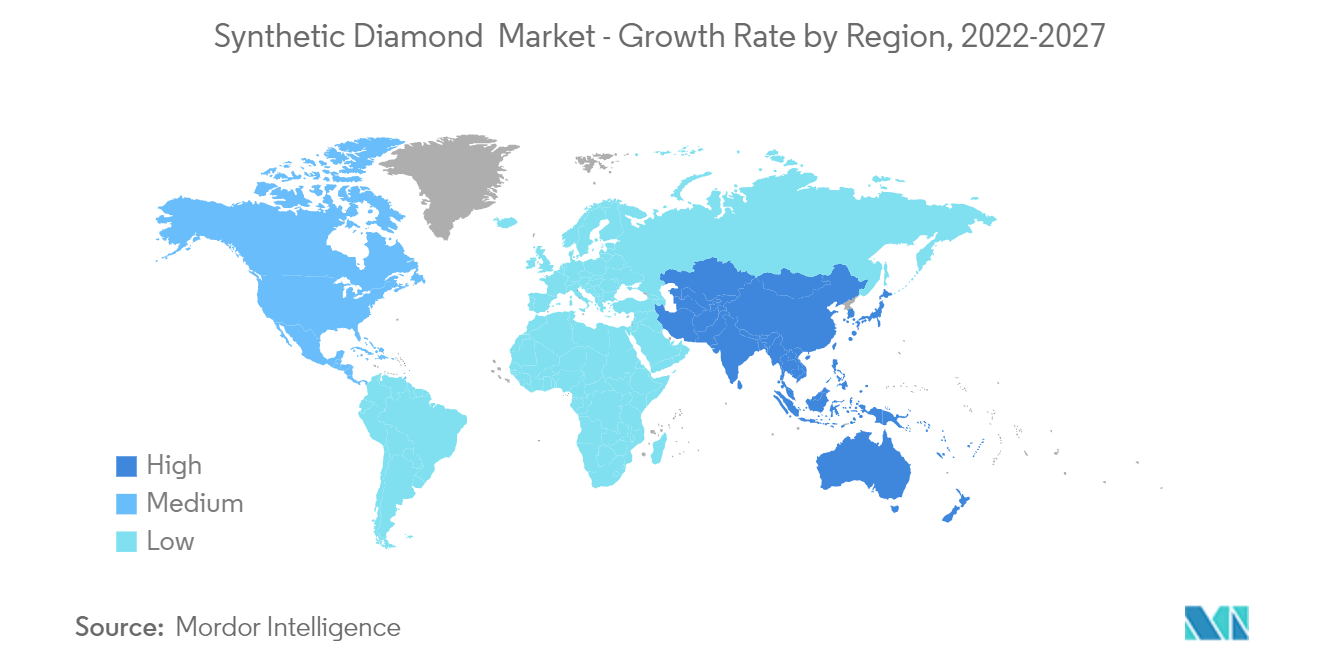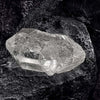
How Much Do Man-Made Diamonds Cost: Unveiling the Price Range
As consumers increasingly prioritize both cost-effectiveness and ethical considerations in their purchases, man-made diamonds have surfaced as a noteworthy alternative in the diamond industry. These lab-grown diamonds, which are also known as synthetic or cultured diamonds, replicate the physical and chemical properties of natural diamonds. Our understanding of pricing for these stones suggests they often come at a more accessible price point compared to their natural counterparts.
Table Of Contents
- Understanding Man-Made Diamonds
- Pricing of Lab-Grown Diamonds
- Choosing the Right Man-Made Diamond
- Economic Considerations
- Impact and Sustainability
- Shopping for Man-Made Diamonds
- Caring for Your Diamond
- Technological Advances in Diamond Production
- The Future of Man-Made Diamonds
- Frequently Asked Questions
The cost of man-made diamonds is determined by several factors, including size, color, clarity, and cut—the same criteria that govern the value of mined diamonds. However, due to differences in production methods, lab-created diamonds typically cost less per carat. This affordability, combined with their nearly identical appearance to mined diamonds, makes them an attractive option for many buyers looking for beautiful, durable, and more sustainable jewelry options.
In the diamond market, the pricing of man-made diamonds has seen a downward trend. For instance, the price of a lab-created diamond with certain specifications that might have cost $4,100 at the beginning of 2017 saw a decrease by the time of this writing. The lower pricing does not compromise the stone's quality either; man-made diamonds can achieve the same high levels of clarity and color, and are available in various cuts, mirroring their natural counterparts. This offers us the opportunity to select from a broad spectrum of diamonds to meet diverse preferences and budgets.
Understanding Man-Made Diamonds
In this section, we'll explore the intricacies of man-made diamonds, focusing on their formation, how they compare to natural diamonds, and the defining qualities that determine their value.
Formation Process
Man-made diamonds, also known as synthetic diamonds, are created in highly controlled laboratory environments using advanced technological processes. The two primary methods are High Pressure High Temperature (HPHT) and Chemical Vapor Deposition (CVD). HPHT mimics the natural growth conditions of diamonds by subjecting carbon atoms to extremely high temperatures and pressure. CVD, on the other hand, involves breaking down molecules of a carbon-rich gas into carbon atoms, which are then deposited onto a substrate, forming layers of diamond.
Man-Made vs Natural Diamonds
While both natural and man-made diamonds consist of crystallized carbon and share identical physical and chemical properties, their origins are distinct. Natural diamonds are formed over billions of years beneath the Earth's mantle, whereas man-made diamonds are crafted in a lab over a few weeks. Synthetic diamonds should not be confused with diamond simulants like moissanite or cubic zirconia, which look similar to diamonds but have different properties. Certification bodies such as the Gemological Institute of America (GIA) and the International Gemological Institute (IGI) provide grading reports for both synthetic and natural diamonds, ensuring their quality and authenticity.
Quality and Characteristics
The quality of man-made diamonds is assessed based on color, clarity, cut, and carat—collectively known as the 4Cs.
- Color: Man-made diamonds can range from colorless to having varying shades, with colorless being the most valuable.
- Clarity: This characteristic accounts for the presence of inclusions or imperfections in the diamond. Fewer inclusions mean higher clarity.
- Cut: The precision of the cut impacts the diamond's sparkle and overall appearance. A well-cut diamond will have more brilliance.
- Carat: The weight of a diamond, with one carat equal to 0.2 grams.
Quality control in labs ensures that the produced diamonds meet specific standards. Embodied with similar allure and durability as mined diamonds, man-made diamonds provide a contemporary alternative for consumers.
Pricing of Lab-Grown Diamonds
Lab-Grown vs Natural 💎
Lab-grown diamonds are typically 20-40% cheaper than natural diamonds.
Factors Affecting Price 📏✂️🌈
Size, cut, clarity, and color influence the price of lab-grown diamonds.
Price Range 💰
Lab-grown diamonds can range from $300 to $20,000 depending on quality and size.
In this section, we explore the nuances affecting the cost of lab-grown diamonds, make a side-by-side price comparison with their natural counterparts, and examine the current market dynamic.
Factors Affecting Cost
Several factors influence the price of lab-grown diamonds. Key among them are carat, cut, color, and clarity. These characteristics are collectively known as the 4Cs, which are crucial in determining the value of both lab-created and natural diamonds. The shape also impacts cost, with round brilliant, oval cuts, and asscher cuts proving popular choices among consumers. Certification from reputable organizations further affects the price, as it verifies the diamond's quality attributes.
Price Comparison with Natural Diamonds
When we compare lab-grown diamonds to natural diamonds, we often observe a significant price difference. Lab diamonds can cost between 20-40% less than mined diamonds of similar grades. However, these prices are not fixed and can vary greatly depending on factors like certification and current market demand. For instance:
Understanding the Market
The market for lab-grown diamonds has seen increased consumer demand due to their lower price point and ethical appeal. Despite typically being cheaper than natural diamonds, lab-grown diamonds hold significant value and mirror the quality of natural stones. It's essential to recognize that market prices fluctuate based on availability, technological advancements in production, and consumer perception of value.
Choosing the Right Man-Made Diamond

When selecting a man-made diamond, we focus on finding the perfect balance between beauty, quality, and value. It's essential to consider factors like carat weight and pricing, obtain proper certification, and use expert guidance to navigate our shopping experience.
Selection Guidance
Before we embark on the journey to purchase a man-made diamond, it's crucial to understand what makes a diamond right for us. Whether we're shopping for engagement rings or a timeless piece of jewelry, the quality of the diamond should not be compromised. We look for better color, clarity, and cut which collectively contribute to the diamond's overall beauty and brilliance. The grading from reputable institutions like GIA (Gemological Institute of America) or IGI (International Gemological Institute) on their grading reports serve as a testimony to the diamond’s quality.
Carat Weight and Pricing
Carat weight significantly influences the price of man-made diamonds. As a general rule,
- The higher the carat weight, the higher the price.
- However, man-made diamonds typically cost at least 40% less than their natural counterparts.
Here’s a simplified pricing representation for man-made diamonds:
It's imperative to note that prices can vary based on other factors too, such as cut, clarity, and color.
Certification and Verification
Certification is paramount for us to ensure the authenticity and quality of our man-made diamond. We ensure that each diamond comes with a grading report from established certifying bodies like GIA or IGI. An IGI certificate, for example, will give us an in-depth look at the diamond's characteristics:
- Clarity
- Color
- Cut (which affects the beauty and sparkle of the stone)
It's our assurance that the diamond's grading aligns with international standards. This verification is not only about quality but also about consumer confidence in the purchase.
Economic Considerations

When considering the purchase of man-made diamonds, two vital economic aspects to consider are your current budget and the long-term value of the diamond you select.
Budget and Affordability
We understand that your budget plays a significant role in the decision-making process. Man-made diamonds offer a more affordable entry point into the world of diamonds with prices varying widely based on factors such as cut, color, and clarity. For example, a 1-carat lab-grown diamond could cost between $400 to $4,000. Retailers like Blue Nile and Brilliant Earth offer high-quality lab-grown diamonds which could be up to 75% less expensive than their natural counterparts, making this option more accessible for a wider consumer base.
- Blue Nile: Astor by Blue Nile™ diamonds are among the brightest, indicating a premium selection of lab-grown diamonds.
- Discount: Lab-grown diamonds can offer a significant discount, with some reports noting a one carat lab-grown diamond priced around $1,200 as opposed to approximately $4,200 for a natural diamond of similar quality.
Resale and Long-Term Value
Considering the investment aspect of buying a diamond, it's important to recognize that lab-grown diamonds typically hold lower resale values compared to natural diamonds. This is in part due to their relative abundance and reduced rarity. Industry giants like De Beers have established a strong market presence for natural diamonds which can often lead to a higher resale price, due to the perceived rarity and enduring desire for natural stones. For consumers looking at the potential for reselling, it's crucial to acknowledge that natural diamonds may retain value better over time.
- Resale Value: A lab-grown diamond will generally have a lower resale value than a natural diamond.
- Investment: If considering diamonds as a long-term investment, natural diamonds tend to be favored in terms of maintaining their value. However, lab-grown diamonds are changing the market dynamics and it’s important to stay informed of current trends.
Impact and Sustainability

In discussing the cost of man-made diamonds, it's imperative we consider their impact and sustainability. We'll examine the environmental footprint and the ethical ramifications to give a rounded view of these gemstones' influence.
Environmental Perspective
Lab-grown diamonds present several environmental advantages over mined diamonds. Mined diamonds generate a significantly higher amount of waste, with a study by Frost & Sullivan highlighting that mining for diamonds produces 4,383 times more waste than their lab-grown counterparts. Additionally, our research finds that for every carat of mined diamond produced, there's nearly 7 times more water used compared to lab-grown diamonds. Also, energy consumption is over twice as high for mined diamonds; lab-grown diamonds are more energy-efficient. It's also worth noting that lab-grown diamonds substantially reduce certain harmful emissions.
- Waste Production: Mining (4,383x) > Lab-produced
- Water Usage: Mining (6.8x) > Lab-produced
- Energy Consumption: Mining (2.14x) > Lab-produced
Ethical and Social Implications
The diamond industry is being reshaped by the emergence of lab-grown diamonds, which appeal to customers' growing ethical concerns. We're seeing a shift towards a more accountable and moral approach when evaluating luxury goods. Man-made diamonds offer an alternative free from the traditional challenges of mined diamonds, such as the exploitation of labor and potential funding of conflict ("blood diamonds"). By choosing lab-grown diamonds, consumers are able to make a stand for better social and ethical practices in the jewelry industry.
- Labor Rights: Lab-grown diamonds may avoid the issues of exploitation.
- Conflict-Free: Lab-grown diamonds are typically free from being conflict catalysts.
By taking a closer look into both the environmental and ethical impacts, we gain a holistic understanding of the sustainability of lab-grown diamonds, painting a picture of a more eco-friendly and socially responsible choice in the jewelry market.
Shopping for Man-Made Diamonds

When we consider the world of man-made or lab-grown diamonds, we're looking at an industry that offers a blend of cutting-edge technology and traditional gemstone retailing. The affordability and ethical sourcing of lab-grown diamonds have made them an attractive option for consumers.
Retailers and Producers
Retailers such as Blue Nile and Brilliant Earth have become notable for providing a wide selection of lab-grown diamonds. These companies are recognized for their commitment to both quality and ethical sourcing. Lab-grown diamond producers are not just limited to these; there are many others, including De Beers through their brand Lightbox, which specialize in crafting these man-made gems. What sets producers apart is their methodology in cutting and polishing the diamonds, turning carbon into the sparkling stones we see in retail. This process of forming a diamond includes the sophisticated use of high temperature and high pressure or chemical vapor deposition.
Online vs In-Store Shopping
The decision to shop online or in-store is a significant aspect of purchasing lab-grown diamonds. Purchasing through online retailers like Blue Nile or Brilliant Earth can offer a wider range of options compared to a physical storefront like Kay Jewelers. Online shopping provides convenience, detailed information, and often better pricing due to lower overhead costs. On the other hand, in-store shopping allows us to see the diamond in person, allowing for a tangible connection with the stone and immediate satisfaction. Both channels are available, enabling buyers to choose based on their preferred shopping experience.
Caring for Your Diamond

To preserve the beauty and sparkle of your man-made diamond, we need to follow a regimen of care that is both simple and effective. Diamonds, whether natural or lab-created, are treasures that require maintenance to keep them shining at their best.
- Regular Cleaning: It's essential for us to clean our diamonds regularly. A solution of warm water and mild dish soap is perfect for this. We can soak the diamond for 20-30 minutes and then gently brush it with a soft-bristle toothbrush to remove any accumulated dirt and oils.
- Weekly Polish: We can use a soft, lint-free cloth to polish our diamond weekly. This helps to maintain its shine and ensures that it continues to reflect light beautifully. Gentle circular motions can help remove any fingerprints or smudges that have built up over the week.
- Professional Inspection: Once or twice a year, it's wise for us to have our diamonds professionally inspected. Jewelers can check for any damage or loose settings and can provide a professional cleaning that revitalizes the stone's sparkle.
- Storage: Proper storage is crucial. We must store our diamonds separately to prevent scratches. A fabric-lined jewelry box with individual compartments or a soft pouch for each diamond is ideal.
By adhering to these care steps, we ensure that our diamonds retain their mesmerizing qualities for years to come.
Technological Advances in Diamond Production

In recent years, our mastery over diamond production technology has surged, significantly reshaping the industry. At the forefront of these technological innovations are Chemical Vapor Deposition (CVD) and High Pressure High Temperature (HPHT) methods.
The CVD method operates by introducing a carbon-rich gas into a vacuum chamber and then applying high temperatures. This environment allows carbon atoms to settle on a substrate material, ultimately forming layers that crystallize into diamonds. Advances in this method include:
- Improved Quality: The ability to produce diamonds with fewer impurities and defects.
- Scalability: Enhanced techniques now allow for the production of larger diamonds suitable for numerous applications.
In contrast, the HPHT method mimics the natural conditions under which diamonds form within the Earth. This process requires immense pressures and temperatures to transform carbon into a diamond. Technological progress here involves:
- Better Control: Finer control of temperatures and pressures results in superior diamond quality.
- Energy Efficiency: Advancements have led to methods that consume less energy, reducing production costs.
Thanks to these improvements, our production of lab-grown diamonds now offers a sustainable alternative with a price advantage over mined diamonds. The capability to produce larger stones has widened our product range, catering to diverse consumer needs.
Our confidence in lab-grown diamonds stems not just from their reduced environmental impact but from the technological strides that have made them practically indistinguishable from naturally occurring diamonds. These technological advances are a testament to our commitment to innovation and sustainability in diamond production.
The Future of Man-Made Diamonds
In assessing the trajectory of man-made diamonds, we observe a burgeoning market that aligns with eco-conscious consumer trends and the quest for value. Prices for lab-grown diamonds have evidenced a dynamic landscape, with considerable variance based on size and quality. For instance, a one-carat man-made diamond can cost around $2,318, reflecting a remarkable affordability when juxtaposed with their natural counterparts.
Demand: It’s our understanding that there is a consistent upswing in the demand for lab-grown diamonds. This is driven by both their cost-effectiveness and sustainable appeal. The market anticipates this demand to potentially grow annually by up to 20%.
-
Market: The expansion of the lab-grown diamond market is disrupting traditional diamond industries. As production technology matures and consumer awareness increases, we can infer a more competitive market space, leading to potentially lower prices and higher quality options.
-
Investment: Lab-grown diamonds are making headway as a compelling option for both consumers and investors. Their lower entry price points make them accessible investments and adaptable assets in the jewelry market.
-
Consumer Demand: Our examination reveals a shift towards ethical and economical choices in jewelry. Ethical considerations play an integral role in the surge of consumer interest in man-made diamonds, paralleled by the financial attractiveness of these stones.
In closing, lab-grown diamond prices may continue to evolve, affected by innovations in manufacturing and changing consumer values. As we proceed, the potential for these diamonds to become staples in the jewelry industry and beyond is substantial, indicating a bright and enduring future.
Also Read
Frequently Asked Questions
In our experience, pricing differences between lab-grown and natural diamonds are significant, and understanding these can guide informed purchasing decisions.
What is the cost difference between lab-grown and natural diamonds?
Lab-grown diamonds typically cost significantly less than natural diamonds. For instance, a manufactured 1 carat, G color, VS1 clarity, ideal cut diamond can cost around $1,500, whereas a comparable earth-grown diamond might cost upwards of $7,700.
How does the price of lab-grown diamonds scale with carat size?
As the carat size of lab-grown diamonds increases, the price also goes up. However, the price per carat can be more affordable compared to natural diamonds, making larger carat lab-grown diamonds more accessible.
What are the factors that affect the pricing of lab-grown diamonds?
The pricing of lab-grown diamonds is influenced by factors similar to natural diamonds — cut, color, clarity, and carat. However, due to their method of creation, they can be priced up to 30% less than natural diamonds of comparable size and quality.
Can the value of lab-grown diamonds compare with that of natural diamonds?
While lab-grown diamonds offer excellent quality and aesthetic equal to natural diamonds, they typically do not hold value in the same way. Natural diamonds are often appraised higher for their rarity, despite comparable physical characteristics.
How much should I expect to pay for a 1.5 carat lab-grown diamond?
The price for a 1.5 carat lab-grown diamond varies, but it can generally range from approximately $2,500 to $4,000 depending on its quality, whereas natural diamonds of the same quality could cost significantly more.
What considerations should be taken into account when purchasing a lab-grown diamond?
Consider the diamond's certification, the retailer's reputation, and the warranty or return policy. Additionally, reflect on the potential resale value and personal preferences for ethical and environmental aspects of diamond sourcing.
Checkout some of our top collections:
Leave a comment
Please note, comments must be approved before they are published.










